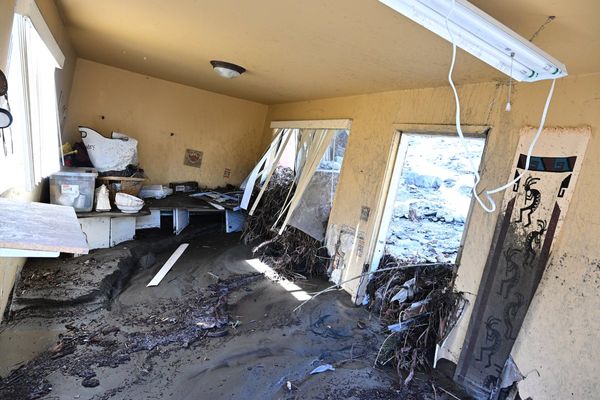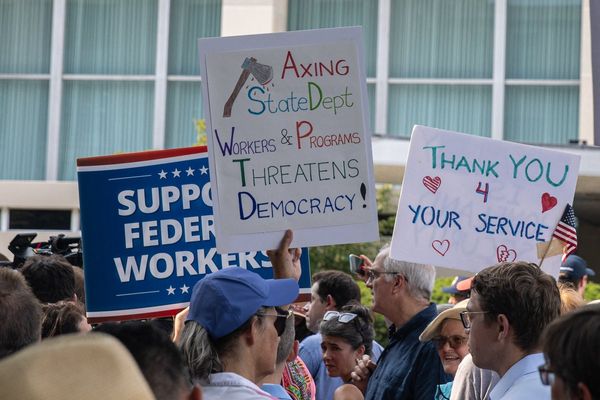
Why did the federal government’s infrastructure investment program (IIP), worth $120 billion under the former Coalition government, suffer cost blowouts so large it now can’t be delivered on budget, as an independent review found yesterday?
The review, commissioned earlier this year and led by veteran transport bureaucrat Clare Gardiner-Barnes, former infrastructure secretary Mike Mrdak and retired WA transport chief Reece Waldock, has resulted in Labor unveiling a list of projects that would be cut to ensure existing projects can be properly funded.
The $120 billion commitment grew from both the Coalition’s relentless pork-barrelling while in government and from pre-pandemic calls from bodies such as the Reserve Bank and the International Monetary Fund for a “pipeline” of infrastructure investment over the long term that would support stable economic growth while interest rates were near zero. But since the pandemic, with two years of supply-side problems and labour shortages, infrastructure construction has gone from economic stabiliser to key inflation driver, with costs blowing out by the billions as governments undertook multiple major projects simultaneously.
The review found that “there is an estimated $32.8 billion in known cost pressures on all IIP projects, with a high risk of future, not-yet-quantified cost pressures”, including over $14 billion in cost overruns on projects not yet completed, a colossal sum given the entire program was only $120 billion.
It concluded that this wasn’t only because of inflation and labour shortages: the Coalition’s project selection process — it tripled the number of projects between 2015 and 2022 — was deeply flawed. “Projects in the IIP that do not demonstrate merit, lack any national strategic rationale and do not meet the Australian Government’s national investment priorities [were selected]. In many cases these projects are also at high risk of further cost pressures and/or delays. A number of projects were allocated a commitment of Australian Government funding too early in their planning process and before detailed planning and credible design and costing were undertaken.”
As a result, there is no assurance “that projects in the pipeline have been appropriately selected, designed, costed and delivered to achieve their stated outcomes”. The way the government responded to cost pressures was “ad hoc, often not responsive to evidence of looming cost increases or aligned with long-term plans and strategies, and lack transparency and consistency”.
And many small projects, the review says, were added in response to the pandemic, when stimulus was believed to be needed, and “too many large-scale projects are receiving funding commitments without adequate planning, costings and programming to sufficiently manage the significant increase in delivery costs within a volatile market.”
The review also recommends a big lift in funding to local councils for road maintenance and upgrading, especially in rural areas.
In response, Infrastructure Minister Catherine King reprofiled and reallocated much of the funding to increase spending on 37 projects nationally, while pulling funding from 50 projects. A number of projects will also proceed for planning, with funding reserved for construction. Projects that will now miss out include five commuter car parks from the Coalition’s notorious “car pork” scheme (though a number will proceed and some will receive extra funding), Great Western Highway upgrades in the Blue Mountains, rail upgrades between Sydney and Newcastle, the Geelong fast rail project, some Melbourne freeway upgrades, plans to improve connectivity to the port of Melbourne, regional road upgrades, the future road and rail connections for Perth project in WA and commuter car parks in Queensland.
Projects that will receive large funding boosts include the M5 Motorway-Hume Highway intersection upgrade in outer Sydney, the Western Highway Ballarat to Stawell duplication in Victoria, the Torrens to Darlington north-south corridor in SA (an extra $2.7 billion), a $1 billion boost to the Perth Metronet public transport project, the Alice Springs to Halls Creek corridor upgrade in the NT, the Kuraby-Beenleigh faster rail upgrade in Queensland ($1.7 billion) and another $300 million for the Bruce Highway-Rockhampton Ring Road.







